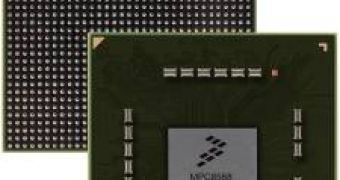Advanced Micro Devices announced that it will begin to license some of its graphics technologies to Freescale Semiconductor, a company active in the mobile and multimedia platform solutions. The scope of this license agreement between the two hardware companies is that Freescale needs a number of 2D and 3D graphics technologies for its next generation of mobile devices.
As Freescale Semiconductor is a company active on the mobile market, it needs a graphics technology that can satisfy most users' demands for visual effects, while keeping the hardware level needed at a minimum, just like the energy consumption. According to a press release from AMD, Freescale will incorporate two AMD graphics technologies, the OpenGL ES 2.0 and the OpenVG 1.0, into the make up of its i.MX applications processors.
The two graphics cores from AMD are both optimized to offer an extended battery life without impairing their visual performance. Thanks to these outstanding features, AMD's technologies will be used to power key mobile applications like games, navigation systems and generally user interfaces. Freescale will build a number of i.MX processors based on the AMD technologies for use in portable media players, portable navigation, home electronics and automotive infotainment applications.
''The adoption of AMD graphics technology by a world-leading semiconductor supplier validates our belief that thrilling graphics and attractive user interfaces are driving growth and revenues throughout the wireless industry'', said Adrian Hartog, senior vice president and general manager of AMD's Consumer Electronics Group. ''By licensing AMD's leading technology, Freescale can leverage our patented Unified Shader Architecture and the only native vector graphics hardware solution to offer their OEM customers outstanding graphics functionality.''
Most of the current graphics technology that is currently used by AMD comes in fact from its graphics division, the formally independent company ATI, which was acquisitioned by the central processing units manufacturer in 2006. Products like the Imageon media processors, which are now integrated into all kinds of mobile and handheld devices like mobile TV, video, photography, video telephony, music and 3D graphics processing, come as a direct result of the merging of the two companies.

 14 DAY TRIAL //
14 DAY TRIAL //